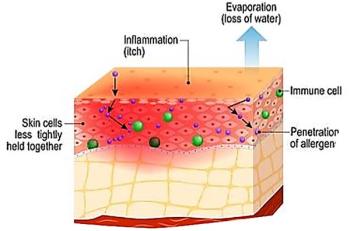
A Pulmonary Function Test on Asthma and COPD
Obstructive, restrictive, or mixed airways disease? See what you know about asthma, COPD, and the test results used to diagnose each.
1. Pulmonary function test (PFT) results showing an FEV1/FVC ratio <70% in adults and <85% in children aged 5-18 years old could indicate which of the following:
A. An obstructive defect
B. A restrictive pattern
C. Additional testing is necessary
Answer: A. An obstructive deficit.
A low forced expiratory volume in one second/forced vital capacity (FEV1/FVC) ratio, defined in adults as <70% or below the fifth percentile (lower limit of normal [LLN]) using data from the Third National Health and Nutrition Examination Survey (NHANES III) (American Thoracic Society [ATS] criteria) indicates an obstructive defect. In children aged 5 to 18 years, low FEV1/FVC would be <85% of predicted, according to recommendations from the National Heart, Lung, and Blood Institute’s National Asthma Education and Prevention Program. The 70% criteria in adults is set out in the Global Initiative for Chronic Obstructive Lung Disease (GOLD) guidelines and should be used to diagnose obstructive pulmonary disease only in adults >age 65 years who are symptomatic and at risk for COPD. Using the GOLD criteria in younger patients could result in overdiagnosis, so the ATS criteria should be used. After bronchodilator challenge, an increase in FEV1/FVC of >12% in children aged 5 to 18 years, and >200 mL in adults would indicate that the obstructive defect is reversible (ie, asthma).1
2. Pulmonary function test results showing an FVC below the lower limit of normal in adults, and less than 80% in children aged 5 to 18 years would indicate which of the following:
A. An obstructive defect
B. A restrictive pattern
C. Additional testing is necessary
Answer: C. Additional testing is necessary.
A restrictive pattern may be indicated by PFTs showing an FVC below the fifth percentile (LLN) in adults, based on NHANES III data (ATS criteria), and less than 80% in children aged 5 to 18 years old. The restrictive defect can be confirmed with full PFTs with diffusing capacity of the lung for carbon monoxide (DLCO) testing. Lower DLCO results indicate disease that decreases blood flow to the lungs or damaged alveoli. Because results are adjusted for hemoglobin, a baseline hemoglobin level should be obtained before DLCO testing. A total lung capacity less than 80% of predicted in patients aged 5 to 18 years, or below the LLN in adults, confirms the restrictive pattern. However, the FEV1/FVC ratio is often normal in asthma, but could be low in patients with mixed pattern defects. After receiving bronchodilators, if the patient has FVC above the LLN in adults or >80% predicted in children aged 5 to 18 years, COPD with pure obstruction and air trapping may be present.1
3. A low FEV1/FVC ratio and low FVC taken together indicate which of the following?
A. An obstructive defect
B. A restrictive pattern
C. A mixed pattern
Answer:C. A mixed pattern.
An FEV1/FVC ratio less than the LLN or <70% in adults and <85% of predicted in children aged 5 to 18 years, combined with FVC <LLN in adults or <80% in children aged 5-18 years would indicate a mixed pattern of pulmonary obstruction. Upon bronchodilator challenge, if the FVC corrects to >LLN in adults or >80% of predicted in children aged 5to 18 years, the patient likely has COPD with pure obstruction and air trapping.1
4. In the setting of normal PFTs, which of the following can be used to diagnose exercise- or allergen-induced asthma?
A.Methacholine challenge
B.Mannitol inhalation challenge
C.Exercise testing
D.All of the above
Answer: D. All of the above.
Methacholine challenge has a high sensitivity for diagnosing asthma, but a low specificity that may yield false positives. A positive methacholine challenge is indicated by >20% reduction in FEV1 upon receiving 4 mg/mL of inhaled methacholine. Compared to methacholine, mannitol challenge has lower sensitivity but higher specificity for diagnosing asthma or exercise-induced bronchoconstriction. A positive mannitol inhalation challenge is indicated by >15% decrease from baseline FEV1 at a total dose of ≤635 mg inhaled mannitol, or 10% decrease between two consecutive doses. Treadmill exercise testing has very good sensitivity and specificity for diagnosing exercise-induced bronchoconstriction, but only modest sensitivity and specificity for asthma. Positive results are indicated by ≥10% drop in baseline FVC or FEV1 at two consecutive time points 30 minutes after stopping exercise.
5. Women die more frequently from COPD than men.
A.True
B.False
Answer: A. True.
COPD is associated with air pollutants, α-1 antitrypsin deficiency, poor nutrition, and low socioeconomic status, but by far the major cause of COPD is cigarette smoking. From 1980 to 2000, rates of cigarette smoking tripled among American women. For the first time in history, American women were reported as dying from COPD at higher rates than men.2 During the period 1999-2010, while the annual number of deaths from COPD increased slightly, the age-adjusted death rate for COPD declined among men but did not change significantly in women or overall.3
6. Monotherapy with long-acting Ã-agonists (LABAs) can be used for the treatment of both COPD and asthma.
A. True
B. False
Answer: B. False.
Monotherapy with LABAs is not recommended in asthma patients because LABAs can increase the risk for exacerbations and death in asthma. On the contrary, LABAs can be used for maintenance therapy in patients with COPD. The Global Initiative for Asthma recommends controller drugs like inhaled corticosteroids (ICSs) or a combination of ICSs plus LABAs for persistent asthma.4
Was this Q&A helpful? Why/why not? Please leave a comment below and let us know how we can improve our content for primary care providers. Thank you.
References:
1. Johnson JD, Theurer WM. A stepwise approach to the interpretation of pulmonary function tests. Am Fam Physician. 2014 Mar 1;89(5):359-66.
2. Mannino DM, Homa DM, Akinbami L, et al. Chronic obstructive pulmonary disease surveillance--United States, 1971-2000. MMWR Surveill Summ. 2002 Aug 2;51(6):1-16.
3. Ford ES, Croft JB, Manino DM, Wheaton AG, Zhang X, Giles WH. COPD Surveillance-United States, 1999-2011. Chest. 2013 Jul; 144(1): 284–305. Published online 2013 Apr 25. doi:
4. Spencer P, Krieger B. The differentiation of chronic obstructive pulmonary disease from asthma: a review of current diagnostic and treatment recommendations. Open Nurs J. 2013 Mar 22;7:29-34. doi: 10.2174/1874434601307010029. Print 2013.
Newsletter
Enhance your clinical practice with the Patient Care newsletter, offering the latest evidence-based guidelines, diagnostic insights, and treatment strategies for primary care physicians.




















































































































































































































































































